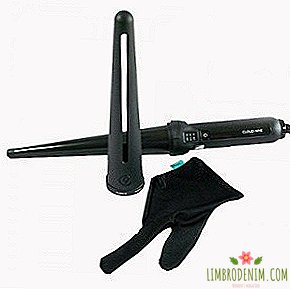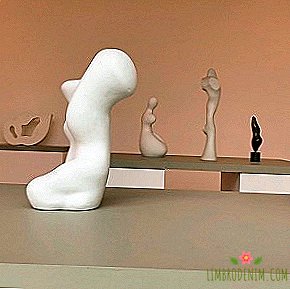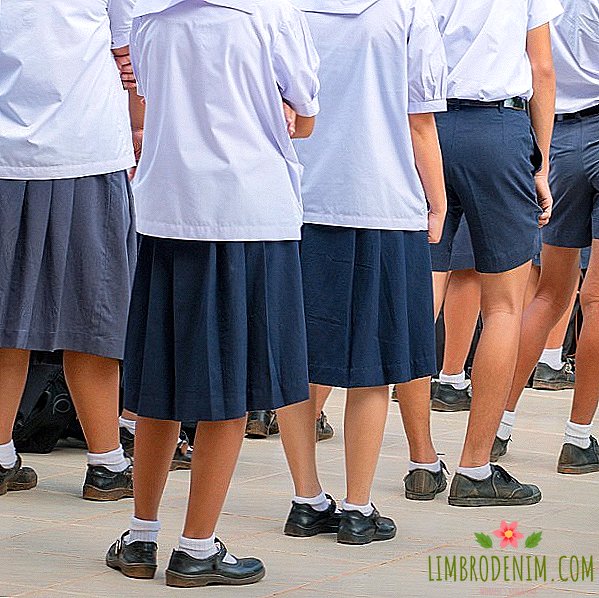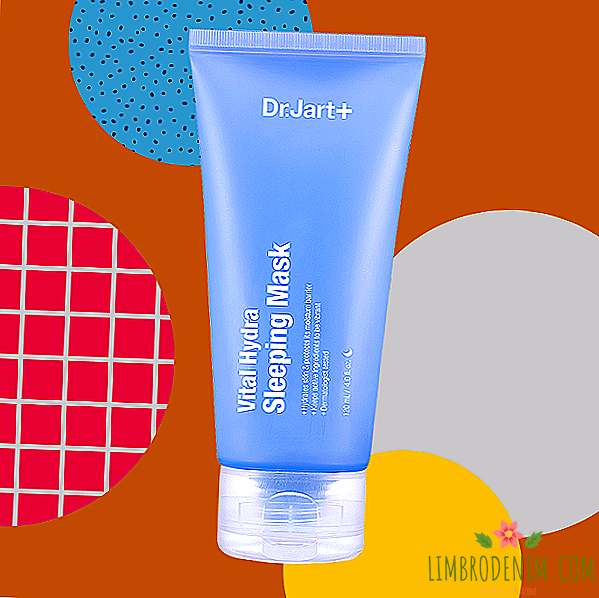Fragrant world: 10 bottles for perfumes and the history of their creation
Text: Yana Zubtsova, beauty editor, journalist, author of the Beauty Insider blog. Illustrations: Vika Lobanova.
Nina Ricci - l'Air du Temps (1948)
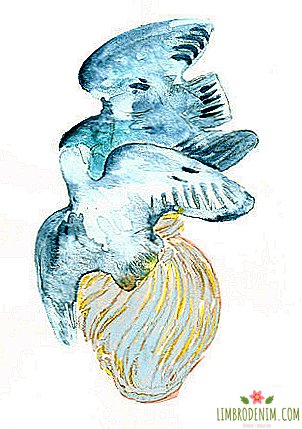
One of the most iconic bottles, one of the most iconic flavors and one of the few, by the way, that for the more than 60-year history of existence has not undergone radical changes and happily avoided sequels and prequels. It was created in the post-war era, new look and new life, when world peace seemed fragile and very romantic. The dove was a symbol of flavor, and doves have always been a symbol of love. Mark Lalique, the son of Rene Lalique and the successor of his glassblowing craft, came up with planting doves on the lid of the bottle, where they remain until now.
Chanel No. 5 (1921)

This year's bottle is 90 years old, and it is still in trend. Before its appearance, the perfume was poured into intricate amphora bottles and angel bottles: it was believed that the fragrance itself was not capable of forcing the buyer to fork out, and at the sight of the angel the purse would burst open by itself. Mademoiselle Chanel - the first who came to mind that perfume is a jewel, and a bottle is only a container. The prototype of the bottle No. 5 became a pharmacy flask with soothing drops, which Koko took the night before, as she could not sleep. This bottle, like the drops themselves, was of Russian origin, from Vorontsovskaya pharmacy in St. Petersburg.
Guerlain - Shalimar (1925)

Jacques Guerlain was the first to guess that even a good fragrance needs a legend to become salable. Over the Shalimar legend - about the love of the Indian ruler of Shah-Jahan to the beauty Mumtaz-Mahal, which did not end with her death, but embodied in the Taj Mahal and the Shalimar gardens ("Love Gardens") - the best copywriters and PR people of that time obviously fought . The bottle was created by representatives of the Baccarat family, with whom Jacques Gerlaine was a friend. According to the plan, the bottle is a fantasy-enriched copy of the fountains in the Shalimar gardens. The similarity was really striking, until a year ago Jade Jagger was ordered to do an update. She eliminated the exciting roundness, added a bit of modern minimalism, and it remains to be seen whether this (and also the completely rewritten flavor formula) will sigh for Shalimar a new generation of consumers.
Lancome - Tresor (1952, 1990)

This treasure was presented to the public in 1952 at a ball in the palace of Chaillot. They gave ballet, and among the dancers were fairy Magie and Prince of the East Tresor. The fragrance itself was poured into crystal bottles in the shape of a classic-cut diamond, facets - strictly 75. It was impossible to doubt: there is a real treasure in front of you, which, in fact, means the word Tresor in French. No one doubted. In 1990, the scent and bottle were completely rethought. Now this is a pyramid, which, if desired, can also be considered a jewel, but with some stretch. In 2010, a limited edition (20 pieces) version of Tresor Diamant Noir in a bottle resembling a diamond in a black frame, on a neck - crystals, the price - € 2,000.
Christian Dior - Miss Dior (1947), Miss Dior Cherie

The first fragrance of the house is Dior, which endured a lot of reprints and transfusions (into other bottles), but retained on its neck the famous Diorovsky bow, bow tie, which the great illustrator Rene Gruot once depicted on the neck of a white swan. Initially, the bow was placed on the neck of the crystal amphora, then on the drawing of the label of a rectangular bottle, then again migrated to the neck of the bottle. The bottle changed colors (white - for one concentration of perfume, black - for another), it was either metallic, or glass, then it seemed to be frosty. But he came to our days and adorned the version in which Natalie Portman is now involved: in the commercial, the girl steals the tie of her boyfriend and turns it into a sex toy.
Dior - J'Adore (1999)

The most commercially successful fragrance at home today, Dior, which has sustained a lot of re-releases, improvements, deterioration and limited editions over 12 years, owes its fame not only to perfumer Calis Azancheev-Becker, who invented it, but also to designer Herve van der Straten, who created the bottle . The most important task of Straten was to connect something eternal, something modern and something very Dior into one whole. He did it masterfully, inventing a bottle that resembles an ancient amphora (eternal), laconic (modern), horizontally like an infinity sign, and in a vertical position like Christian Dior’s favorite number "8" and at the same time repeating the silhouette of New Look, which the designer shook the world in 1947 At the end of 2011, we will see new limited editions of J'Adore. They will cost from 8,000 to 30,000 euros.
YSL - Opium (1977)

Starting to create this fragrance, perfumers Jean Amik and Jean-Louis Siezak received a clear brief from Yves Saint Laurent: to make perfumes that would have liked the Japanese Empress. The design of the bottle was invented by Pierre Dinan - he was given the task to recreate the picture seen by the master when meeting with LSD. "Something fiery, colorful, bright, orange, purple, well, you understand me!" Dinan understood: he served in Indochina and tried opium there. As a result, a unique aroma was created, which drove half the world crazy, and a unique bottle, similar to a lacquered box for storing tobacco ... and opium, which is already there. This is almost the only case in the history of perfumery, when the shape of the bottle dictated the name of the fragrance. Created after the beginning of 2011, Belle d'Opium is unlikely to repeat the success of the original. And his bottle no longer evokes thoughts of unauthorized bliss.
Guerlain - Mitsouko (1919)

This bottle, created by the house of Baccarat, was used twice by the house of Guerlain: for the perfumes of L'Heure Bleue, published in 1912, and for the great smell of Mitsouko, released in 1919. Subsequently, Guerlain had many chances to dilute these two flavors and pack a Mitsouko into something more original, but this did not happen. Until now, all adhere to the legend that two identical bottles symbolize the date of the beginning and end of the First World War, however, perhaps the reason is more prosaic: Mitsouko sold so well that it was simply not necessary to change anything in it.
Givenchy - Organza (1996)

Two designers have a hand in this fragrance. The idea of its creation belonged to Alexander McQueen, who took the post of art director of the Givenchy house in 1996. A white chiffon dress, which served as a source of inspiration for Serge Manso, the author of the Organza bottle, was created by John Galliano, who worked in the House before McQueen's arrival. At that time it was the most fashion-oriented bottle and the most fashionable fragrance. Passage of the model on the catwalk and a cursory stop on the edge in front of photographic lenses, waving chiffon, a perfect body translucent through it - all this was caught and fixed in the glass.
Van Cleef & Arpels - First (1976)

Having started to master the perfume business, jewelry houses tried to make their fragrances directly associated with their jewelry. Van Cleef & Arpels was the first to succeed in this by releasing its First. Created by his great perfumer Jean-Claude Ellen, the bottle is an enlarged copy of the famous VCA pendant. Another masterpiece of the brand is Feerie toilet water in a bottle with the famous VCA fairy with a magic wand, the fairy writes out a ballet pas, and the bottle itself is cut like a gemstone. Two designers worked on the bottle: Joel Desgripp was in charge of the overall concept and the fairy; Fabrice Legros was responsible for cutting the bottle; he had a secret to turning banal glass into a real jewel.
